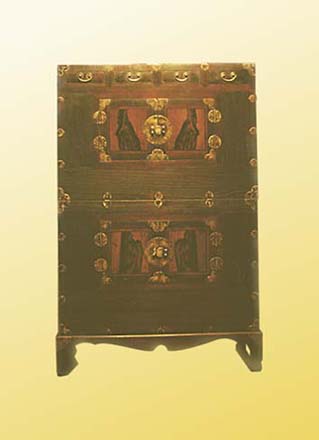| Black
Persimmon Nong
Black persimmon, red oak, paulownia, pine; nickel fittings, natural lacquer Early to mid-nineteenth century; Ch'ungch'ong Province
|
 |
| Black
Persimmon Nong
Black persimmon, red oak, paulownia, pine; nickel fittings, natural lacquer Early to mid-nineteenth century; Ch'ungch'ong Province
|
 |
|
|
| Click on the view you would like to see. | 
Woods combination |

Door |
Drawers |
Nail |
|
|
1. Black paulownia nong |
2. Linden bandaji |
3. Zelkova burl jang |
4. Paulownia ham |
5. Red paulownia nong |
6. Wild walnut nong |
7. Red pine ham |
8. Cherry bandaji |
9. Zelkova bandaji |
10. Persimmon nong |
11. Zelkova lattice jang |
12. Pine framed bandaji |
13. Red pine bandaji |
More |